What is Sciatica?
Sciatica is one of the most common problems we see at our London Physiotherapy & Injury Clinic. With more people working from home, at poor quality desks, we have seen an increase in the amount of back pain patients hobbling through our door.
If you’re unsure if you have Sciatica here are the common symptoms below:
- A shooting pain starting in the lower back that travels through the buttocks & down the leg
- Typically symptoms occur on one leg & not both
- A loss of strength & weakness on one leg
- Numbness, tingling, pins and needles along one leg
- Pain gets worse when bending, twisting or heavy lifting
Every case of sciatica is different, with some patients unable to even walk due to the high levels of pain. However it is possible to reduce your pain through gentle exercise at home. Our injury specialists at our London clinic have picked these 3 exercises to help you manage your sciatica from home.
If any of these exercises cause your symptoms to increase, please stop the exercise immediately.
We recommend combining these exercises with:
- Ice on the lower back 2x a day for 5-10 minutes
- 8 hours of sleep each day
- 2-3L of water every day
- Avoid heavy lifting and manual tasks
1. The Dead Bug
This exercise looks complex but in fact is very simple & easy to complete at home. The Dead bug is a great exercise for treating Sciatica because it helps to improve your core strength & stability. With a stronger core, you will be able to stabilize the trunk of your body more effectively whilst reducing the pressure to your lower back.
With all of these exercises, please follow the instructions carefully & focus on slow controlled movements.
- Start in this position, with your arms & legs in the air.
- Ensure your lower back is pressed into the floor, do not curve the lower spine.
- Keep your core tight & engaged.

- Now lower down the opposite arm and leg whilst keeping the other side still in the air.
- So as demonstrated by our practitioner Anna first lower your right arm & left leg.
- As you are lowering your right arm & left leg, keep the other limbs in the air.
- When the right arm & left leg are close to the floor, slowly bring them back up to the middle.
- Ensure the movement is completed nice & slow, with controlled breathing throughout.
- Make sure the lower back is pressed against the floor throughout the movement.

- Then simply repeat the exercise on the other side.
- As shown by Anna, now lower the left arm and right leg.
- Once again keep the movement slow & controlled with steady breathing throughout.
- Make sure the lower back is pressed against the floor & you are focussing on the quality of the movement.

- Complete 3 Sets of 10 Repetitions (3×10) of this exercise. Do not worry if you struggle with the exercise. Simply reduce the amount of repetitions & gradually increase the volume.
- If at anytime your pain worsens, please stop the exercise.
2. Bird Dog Exercise
Another strange name we know, but this is another great exercise for treating your Sciatica at home. This exercise once again does not need any equipment & is simple to complete. The Bird dog exercise helps to reduce your Sciatica pain by improving the strength of your core, glute & lower back muscles. This will help to improve the overall stability of your trunk & lower body.
With all of these exercises, please follow the instructions carefully & focus on slow controlled movements.
- Start in an all fours, position with your palms an knees against the floor.
- Ensure your lower back is not arched and maintain a neutral spine.
- Then slowly extend the opposite arm and leg outwards.
- As demonstrated by Anna, slowly extend the right arm and left leg.
- Keep the movement slow and maintain a neutral lower back position.
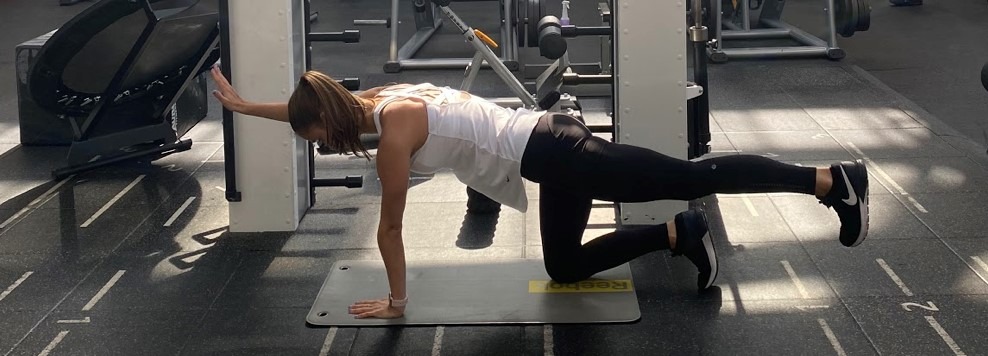
- Then bring the right arm and left leg back into the central position and reset.
- You now can simply replicate that movement on the other side.
- Extend your left arm and right leg outwards, whilst keeping your core engaged and breathing throughout.
- You should be aiming to get into the exact position as demonstrated by Anna.
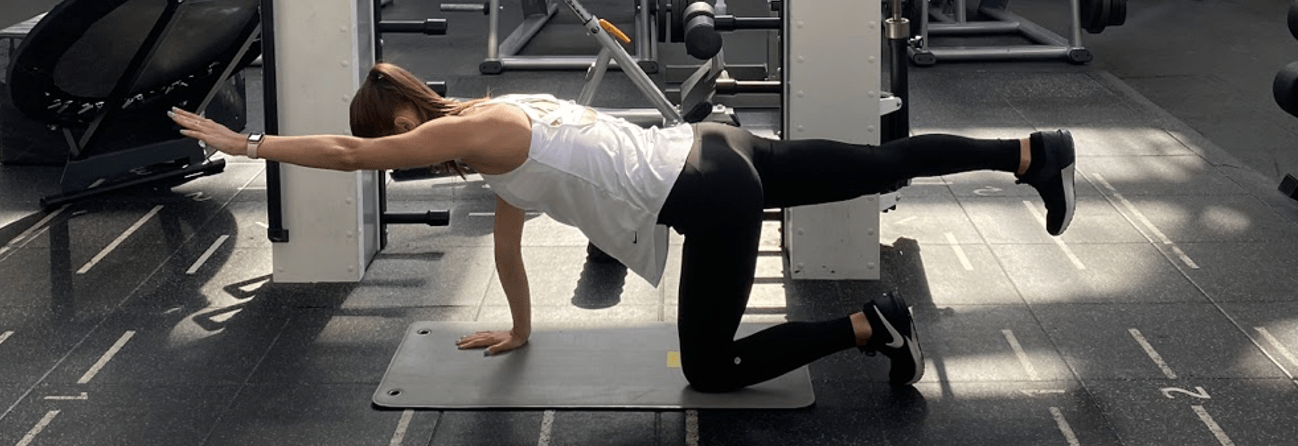
- Complete 3 Sets of 10 Repetitions (3×10) of this exercise. Do not worry if you struggle with the exercise. Simply reduce the amount of repetitions & gradually increase the volume.
- If at anytime your pain worsens, please stop the exercise.
3. Glute Bridge
There are many variations of Glute Bridges, but for now lets teach you the basic version. This exercise once again does not need any equipment & is simple to complete. The Glute Bridge exercise helps to reduce your Sciatica by improving the strength of your glute & hamstring muscles. All 3 of these exercises target slightly different areas of your body, to ensure we are the improving overall strength of the trunk & lower body.
With all of these exercises, please follow the instructions carefully & focus on slow controlled movements.
- For this exercise, start on the floor with your knees bent up, feet flat on the floor & lower back pushed into the mat.
- Ensure your core is engaged and maintain controlled breathing throughout the exercise.
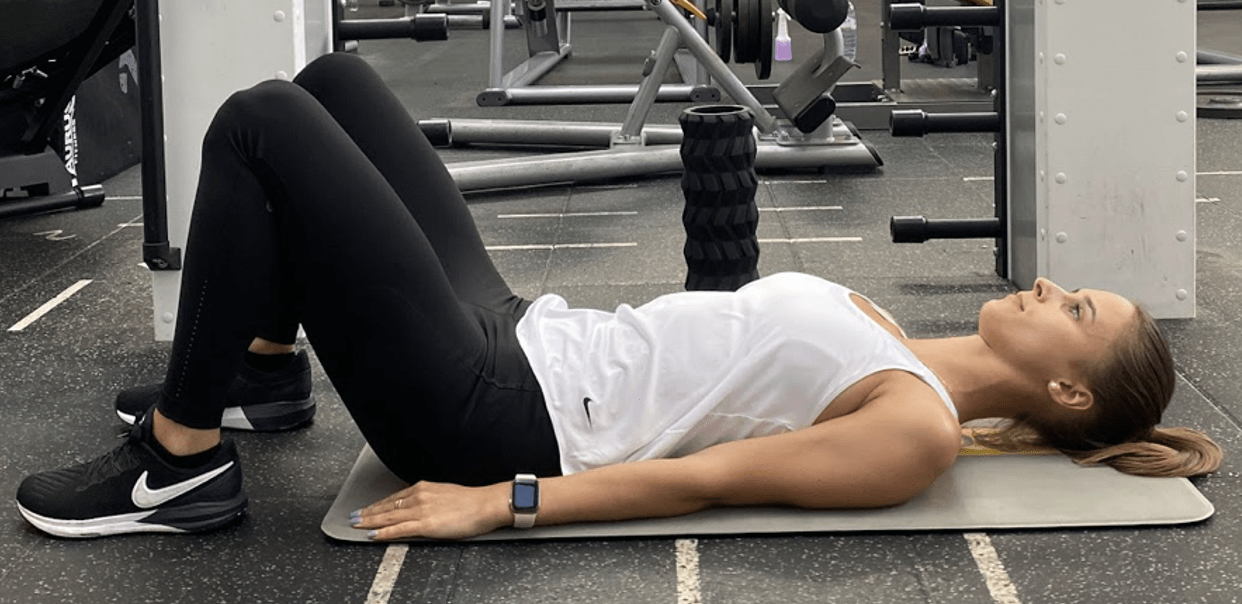
- Then whilst keeping your feet flat on the floor, push your hips upwards and get into the bridge position.
- Please use the image of Anna below as a reference for how high you should push upwards.
- When you reach the top of the movement, hold for a couple seconds and then slowly bring your hips back down to the floor.
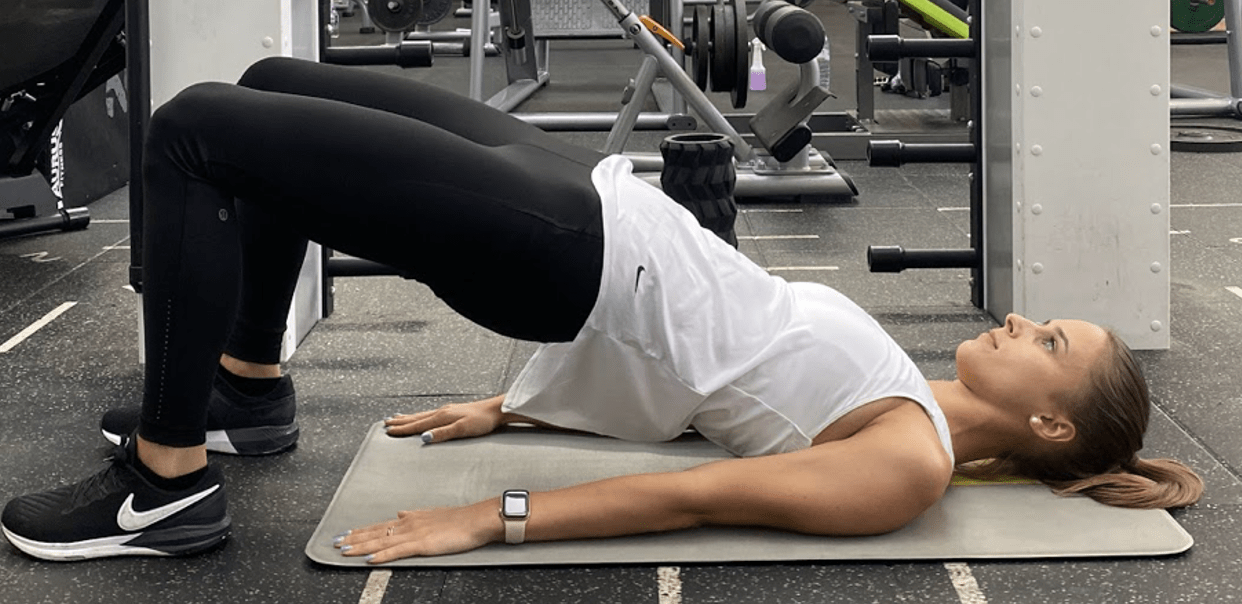
- Complete 3 Sets of 10 Repetitions (3×10) of this exercise. Do not worry if you struggle with the exercise. Simply reduce the amount of repetitions & gradually increase the volume.
- If at anytime your pain worsens, please stop the exercise.
Sciatica is a painful and debilitating condition that takes time to heal. We always recommend consulting a professional for conditions such as Sciatica, however if you’re unable to do these exercises are a good starting point.
If you require treatment for your Sciatica or have any questions about these exercises, please feel free to contact our London clinic from the details below.
Email : info@fit2functionclinic.co.uk
Phone : 02071172076
